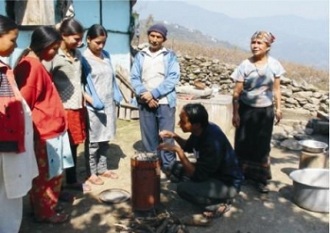Environ Res. 2013 Feb;121:11-6.
Seasonal concentrations and determinants of indoor particulate matter in a low-income community in Dhaka, Bangladesh.
Gurley ES, Salje H, Homaira N, Ram PK, Haque R, Petri WA Jr, Bresee J, Moss WJ, Luby SP, Breysse P, Azziz-Baumgartner E.
Centre for Communicable Diseases, International Center for Diarrheal Diseases Research, Bangladesh (icddr,b), 68 Shaheed Tajuddin Ahmed Sarani, Mohakhali, Dhaka-1212, Bangladesh. egurley@icddrb.org
Abstract
Indoor exposure to particulate matter (PM) increases the risk of acute lower respiratory tract infections, which are the leading cause of death in young children in Bangladesh. Few studies, however, have measured children’s exposures to indoor PM over time. The World Health Organization recommends that daily indoor concentrations of PM less than 2.5μm in diameter (PM(2.5)) not exceed 25μg/m(3). This study aimed to describe the seasonal variation and determinants of concentrations of indoor PM(2.5) in a low-income community in urban Dhaka, Bangladesh.
PM(2.5) was measured in homes monthly during May 2009 to April 2010. We calculated the time-weighted average, 90th percentile PM(2.5) concentrations and the daily hours PM(2.5) exceeded 100μg/m(3). Linear regression models were used to estimate the associations between fuel use, ventilation, indoor smoking, and season to each metric describing indoor PM(2.5) concentrations. Time-weighted average PM(2.5) concentrations were 190μg/m(3) (95% CI 170-210). Sixteen percent of 258 households primarily used biomass fuels for cooking and PM(2.5) concentrations in these homes had average concentrations 75μg/m(3) (95% CI 56-124) greater than other homes.
PM(2.5) concentrations were also associated with burning both biomass and kerosene, indoor smoking, and ventilation, and were more than twice as high during winter than during other seasons. Young children in this community are exposed to indoor PM(2.5) concentrations 7 times greater than those recommended by World Health Organization guidelines. Interventions to reduce biomass burning could result in a daily reduction of 75μg/m(3) (40%) in time-weighted average PM(2.5) concentrations.




